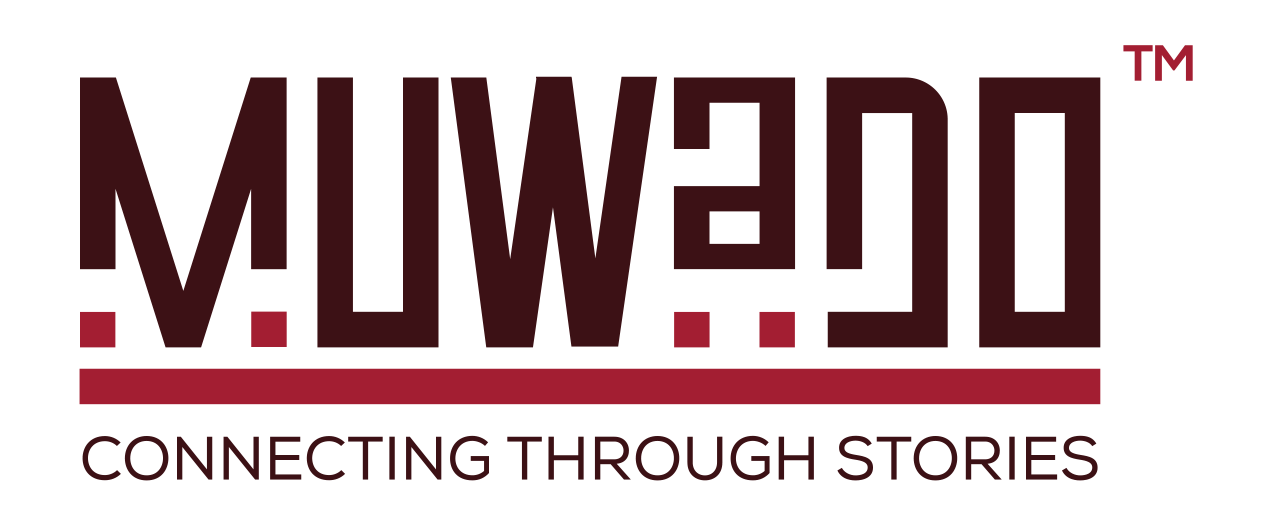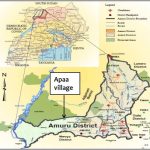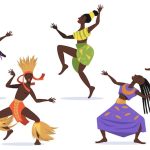Beneath the lush, emerald hills and tangled forests lies a fortune that could light up the world: gold, cobalt, tin, tantalum, tungsten—minerals that power our smartphones, electric cars, and satellites. This is a land where prosperity should bloom, where dreams of wealth should take root. But for decades, this glittering promise has been drowned in blood, shrouded in the screams of war, and haunted by ghosts that refuse to rest. This is the story of a nation cursed by its blessings, where the very riches that could save it fuel an endless cycle of suffering. It’s a tale of greed, of geopolitics, of forgotten people digging not for gold, but for survival—a story the world can no longer pretend not to see.In the provinces of North Kivu, South Kivu, and Ituri, the soil sparkles with possibility. In 2022, the DRC produced 68% of the world’s cobalt, the lifeblood of batteries that drive the green revolution. Gold glitters in rivers and veins, while tin, tantalum, and tungsten wait to be unearthed. If wealth were measured in resources alone, Eastern Congo would be a paradise. But paradise is a lie here. The scars of history run deep, from the brutal days of Belgian colonial extraction to the catastrophic First and Second Congo Wars, which claimed millions of lives between 1996 and 2003.
Those wars never truly ended; they fractured into a mosaic of violence. By 2024, over 120 armed groups roamed the hills, each fighting for a piece of the land, the minerals, or the power. In the city of Goma, once a bustling hub, the air now carries the weight of fear. In January 2025, the Rwanda-backed M23 rebel group swept in, seizing the city and sending hundreds of thousands fleeing into the night, joining the 7 million already displaced across the DRC—one of the worst humanitarian crises on Earth.At the heart of this turmoil lies gold, a metal as beautiful as it is deadly. Easy to smuggle, impossible to trace, it’s the perfect currency for war. Armed groups like M23 don’t just fight for territory—they fight for mines. In April 2024, M23 captured tantalum mines near Rubaya, turning the earth’s riches into their arsenal. Miners, often working with little more than picks and prayers, are extorted or forced to hand over their finds.
The rebels sell the minerals through shadowy networks, and the profits buy bullets, not bread. The neighbors are complicit. Rwanda and Uganda have long been accused of siphoning Congo’s wealth. Rwanda, a country with no major gold deposits, somehow exported $1.5 billion worth of gold in 2024. The math doesn’t add up—unless you trace the glittering trail back to Congo’s mines. Uganda, too, has been linked to smuggling routes that bleed the DRC dry. In 2024, the European Union sanctioned a Rwandan gold refinery for processing conflict minerals, but the trade persists, a silent theft masked by borders. Yet, to blame minerals alone is to miss the deeper rot. The armed groups aren’t just mercenaries; they’re born from grievances older than the mines themselves.
Ethnic tensions, land disputes, and the ghosts of past injustices fuel their rage. The minerals don’t start the fires—they just keep them burning.In Kinshasa, far from the battlefields, the Congolese government sits on a throne of promises it cannot keep. Corruption festers like an open wound. Since 2014, over 20% of national mining revenue has vanished into the pockets of elites. Gécamines, the state-owned mining company, is a symbol of this betrayal, criticized for secret deals that enrich the few while communities starve. The state is a ghost itself—absent, hollow, unable to protect its people or its wealth. Without a functioning government, Eastern Congo is a land of lawlessness. Armed groups step into the vacuum, offering their own brutal version of order. The people, caught between rebels and a state that fails them, have nowhere to turn.The DRC’s wounds are not just self-inflicted; they’re deepened by the hands of neighbors. Rwanda’s support for M23 is an open secret, documented by the United Nations and condemned by sanctions. Uganda, too, has been accused of backing rebels to secure access to Congo’s minerals. These regional powers don’t just exploit the chaos—they help create it. Diplomacy falters in the face of such entanglements. The International Conference on the Great Lakes Region tries to broker peace, but the roots of the conflict—greed, power, and mistrust—run too deep. The world watches, but its gaze is selective, often fixed on the minerals rather than the people.In the shadow of the mines, the people of Eastern Congo pay the true price. By early 2025, 7 million were displaced, their homes reduced to memories. The fall of Goma was a fresh wound, with families scattered like leaves in a storm. Human rights abuses stain the land. Rebel groups and government forces alike are guilty of horrors: mass killings, rape, torture, and the forced recruitment of children.
In 2024, grave violations against children surged by 30%, each statistic a story of stolen innocence. Women and girls in mining communities face unimaginable violence, their bodies turned into battlegrounds. The wealth of the earth offers no salvation. Over 77% of Congolese live on less than $1.90 a day. Once a breadbasket, the DRC now grapples with food insecurity, with 23.4 million people going hungry. Artisanal miners—up to a million strong—work in conditions that mock dignity. Many are children, their small hands digging for cobalt and gold. The world’s richest minerals are mined by its poorest people.The international community has tried to act, but its efforts often feel like bandages on a broken body. In 2012, the U.S. introduced the Dodd-Frank Act’s conflict minerals rule, forcing companies to disclose the origins of their tin, tantalum, tungsten, and gold. The goal was noble: starve the war of its funding. But a decade later, the results are murky. Gold remains untraceable, smuggled through backchannels. In 2023, 62% of companies couldn’t pinpoint their minerals’ sources.
Worse, the rule has scared firms away from Congolese minerals altogether, leaving artisanal miners jobless and vulnerable to militias. The United Nations’ MONUSCO peacekeeping mission has been a fixture in the DRC for years, but locals see it as a protector of mines, not people. Initiatives like the Just Gold project, meant to create ethical supply chains, struggle against corruption and regional rivalries. Even the DRC’s latest proposal—a minerals-for-security deal with the U.S.—raises fears of more militarization, not peace.The world loves to blame Congo’s minerals for its suffering, but that’s a convenient half-truth. The crisis isn’t just about gold or cobalt—it’s about a nation abandoned by its leaders, exploited by its neighbors, and ignored by a world that profits from its pain. Minerals don’t cause the violence; they sustain it. The real roots—failed governance, ethnic divisions, foreign greed—lie deeper, untouched by sanctions or traceability schemes.There is hope for Eastern Congo, but it demands courage and clarity. The Congolese government must root out corruption, reform mining institutions, and channel revenues into schools, hospitals, and roads. Transparency is non-negotiable. International partners must support community-driven reconciliation, addressing ethnic tensions and land disputes. Justice, not just peace, must guide the way. Rwanda and Uganda must face real consequences for fueling the conflict. Trade deals should reward ethical sourcing, not exploitation. Artisanal miners need fair wages, safe conditions, and freedom from child labor. Social programs and education can break the cycle of poverty. The world must prioritize aid and peacebuilding over military fixes. The DRC’s people, not its minerals, should be the focus.Eastern Congo is not doomed to be a graveyard of dreams. Its wealth could build a nation where children go to school instead of mines, where cities thrive instead of burn. The minerals beneath the soil are not cursed—what’s cursed is the indifference that lets this tragedy endure. The ghosts of war can be laid to rest, but only if the world chooses justice over greed, people over profit. Until then, the people of Congo will keep digging—not for gold, but for a chance to live.
For more visit the following for detailed insights
- Global Witness. (2023). The Cost of Conflict: How Minerals Fuel Violence in the DRC. https://www.globalwitness.org/en/campaigns/conflict-minerals/cost-conflict-drc/
- Human Rights Watch. (2024). Democratic Republic of Congo: Events of 2023. https://www.hrw.org/world-report/2024/country-chapters/democratic-republic-congo
- International Crisis Group. (2024). Mineral Smuggling and Regional Interference in Eastern DRC. https://www.crisisgroup.org/africa/central-africa/democratic-republic-congo/mineral-smuggling
- UNHCR. (2025). DRC Displacement Crisis: 2024 Update. https://www.unhcr.org/news/briefing/2025/drc-displacement-crisis-update
- United Nations Security Council. (2024). Report of the Group of Experts on the Democratic Republic of the Congo. https://www.un.org/securitycouncil/sanctions/1533/panel-of-experts/work-and-mandate
- U.S. SEC. (2023). Conflict Minerals Disclosure Rule: 2023 Compliance Report. https://www.sec.gov/conflict-minerals-report-2023
- World Bank. (2018). Poverty and Shared Prosperity in the DRC. https://www.worldbank.org/en/country/drc/publication/poverty-report-2018
This post was created with our nice and easy submission form. Create your post!





